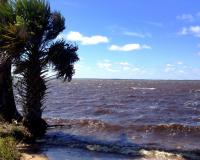
Vibrant Environment
Oceans And Coasts
All | Biodiversity | Climate Change and Sustainability | Environmental Justice | Governance and Rule of Law | Land Use and Natural Resources | Oceans and Coasts | Pollution Control

Earlier this month, the Deepwater Horizon trustees quietly released their Standard Operating Procedures (SOPs), which set out how the natural resource restoration monies totaling up to $8.8 billion will be “manage[d], implement[ed], and administ[ered]” over the long term. The SOPs therefore provide important details about how the restoration program will operate moving forward. The trustees approved these procedures on May 4, 2016.

ELI was founded in 1969—a time when U.S. environmental law was in its infancy and needed a place for cultivation and growth (an imperative that is still incredibly relevant today given the interconnectedness and severity of conservation challenges across the globe). At that moment in time, individuals across the country looked around and saw rivers catching on fire, poor air quality making it hard for children to breathe, and unfettered toxic pollution.
Now that the proposed consent decree among the United States, five Gulf states, and BP has been released, there is greater certainty about the amount of funding that will flow to the Gulf for restoration and recovery efforts.
It’s been an exciting couple of weeks for ELI Ocean Program in the Caribbean. Last week on Curacao, the Ministry of Health and Environment on behalf of Curacao and the Waitt Institute signed a Memorandum of Understanding (MOU) agreeing to work together on Blue Halo Curacao.
Four years ago today, on April 20, 2010, an explosion rocked the Deepwater Horizon mobile offshore drilling unit. Eleven crewmen lost their lives in the blast, and the rig burned for the next thirty-six hours. Then, 41 miles off the southeast coast of Louisiana, the Deepwater Horizon sank. At the wellhead, nearly a mile underwater in the Gulf of Mexico, the environmental disaster was just beginning. Oil gushed for the next three months, during which millions of barrels of oil mixed with millions of gallons of dispersant to contaminate more than 1,000 miles of coast.